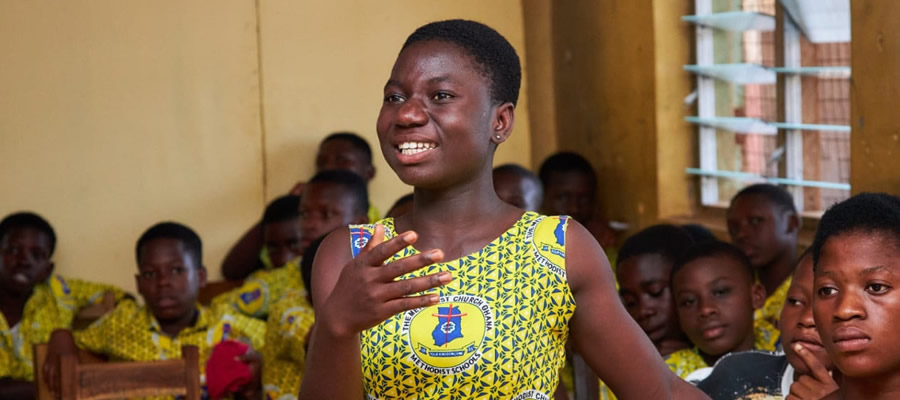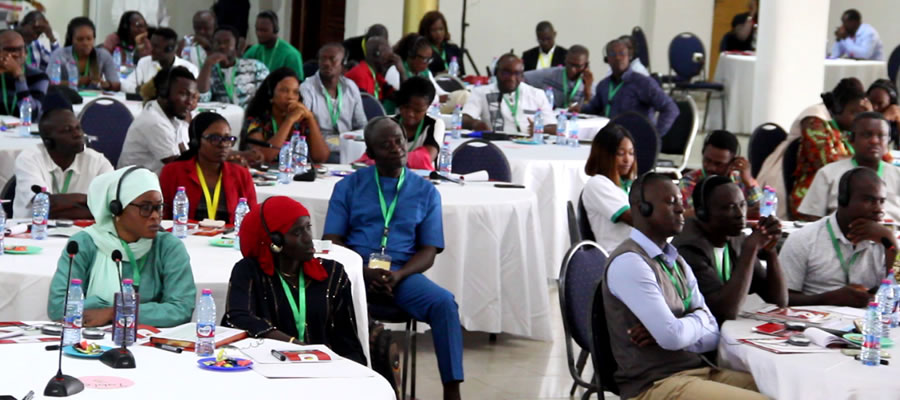

Vulnerability
Introduction
Persons with disabilities (PWD) have been defined as those who are unable to or are restricted in the performance of specific tasks/activities due to loss of function of some part of the body as a result of impairment or malformation (Ghana Statistical Service, 2012). Over the past few decades, there has been an international consensus on the recognition of the rights of PWDs with emphasis on the promotion of their dignity and inclusive in governance.
Knowing the numbers and understanding the characteristics of PWDs and their circumstances can enhance policies that address barriers or prevent them from participating more effectively in national development. The 2010 Population and Housing Census was the first census in the country to include questions on disability. This chapter presents data on PWDs, their characteristics and types of disabilities.
Population with Disability
Table 6.1 presents the population by disability type and sex in the Sunyani municipality. The Data shows that, out of the 123,224 total population of the Municipality, 1,662 (1.3%) have some form of disability.
The table further shows that among the population with some form of disability, sight impairment (36.3%) is the most common disability, followed by physical challenges (26.3%), speech impairment (19.3%), emotional disability (18.0%), hearing difficulty (17.0%), intellectual disability (15.3%) and other (9.3%) in that order.
The table also shows that apart from sight and hearing impairments, where the proportion of females are higher than the proportion of males, in all the other disabilities (speech, physical, intellectual and emotional) the proportion of males are higher than the proportion of females in the Municipality.
Disability by Locality
From Table 6.1 the proportions of PWDs with sight and emotional difficulties in urban areas are higher than the proportions in rural areas of the municipality. The data also show that the rural areas have more PWDs with hearing, speech, physical and intellectual difficulties than in urban areas.
Disability and Economic Activity
Activity status refers to the economic and non-economic activity of persons during the reference period (seven days preceding the census night). Table 6.2 presents the activity status of persons 15 years and older who are disabled by sex. 45
Table 6.2 shows that, for the economically active PWDs 15 years and older in the Municipality, 57.6 percent are employed and 4.2 percent are unemployed. Nearly four out of 10 (38.1%) PWDs are however, economically not active. For employed PWDs in the Municipality, the proportions with hearing difficulty are in the majority, followed by those with speech (52.7%) and sight difficulties (50.0%).
For PWDs who are economically not active, the proportion with intellectual difficulty are in the majority (60.5%) followed by those who are physically challenged (57.7%) and emotional problems (53.9%).
The data further shows that there are more male PWDs (715) than female PWDs (683) in the Municipality. The proportion of male PWDs who are employed (52.0%) however, is higher than the proportion of females PWDs who are employed (47.9%). The data also shows that a higher proportion of female PWDs (49.5%) are not economically active compared to their male counterparts (45.3%).
Disability and Education
Level of education according to the 2010 population and housing census refers to the highest level of formal school that a person ever attended or is attending. This information was obtained for persons 3 years and older. Table 6.3 shows the disability population for persons 3 years and older is 1,614. This constitutes 1.4 percent of the total population of the district. For this population, 29.8 percent have never been to school, 3.0 percent have pre-school (Nursery and Kindergarten) as the highest level of education, 43.9 percent attained basic education and 23.2 percent attained either secondary or senior high school or higher.
In terms of sex, a higher proportion of female PWDs (35.7 %) have never been to school compared to male PWDs (24.1%). On the other hand there are higher proportions of male PWDs than female PWDs at the pre-primary (3.5%, 2.5%), basic (45.2%, 42.6%) and secondary/, SHS and higher (27.2 %, 19.29%) levels of education respectively.
Date Created : 11/20/2017 3:52:39 AM












 facebook
facebook
 twitter
twitter
 Youtube
Youtube
 +233 593 831 280
+233 593 831 280 0800 430 430
0800 430 430 GPS: GE-231-4383
GPS: GE-231-4383 info@ghanadistricts.com
info@ghanadistricts.com Box GP1044, Accra, Ghana
Box GP1044, Accra, Ghana